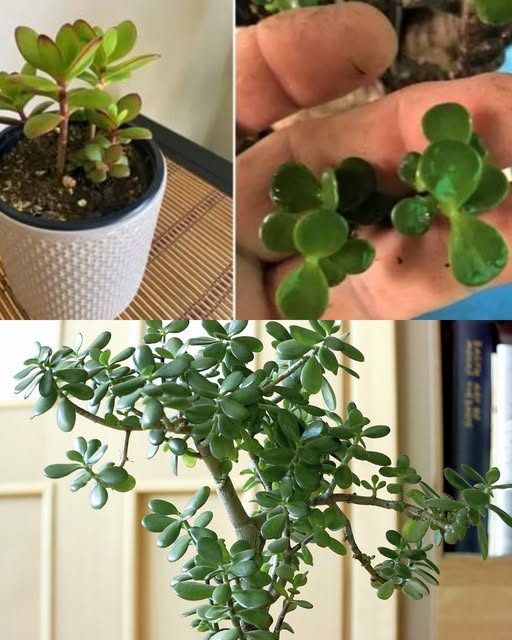ADVERTISEMENT
Jade Trees are slow growers and do not require a lot of fertilizer. However, during the growing season (spring and summer), feeding your plant with a balanced, diluted fertilizer can promote better growth. Use a fertilizer that is specifically designed for succulents or cacti to avoid overfeeding.
For Complete Cooking STEPS Please Head On Over To Next Page Or Open button (>) and don’t forget to SHARE with your Facebook friends
Tips for Fertilizing:
- Fertilize once every 4-6 weeks during the growing season.
- Do not fertilize during the dormant months (fall and winter), as the plant is not actively growing and doesn’t need the extra nutrients.
6. Pruning and Shaping
Pruning your Jade Tree is an important part of its care, especially if you want to maintain a compact, attractive shape. While pruning isn’t necessary for the plant’s survival, it helps remove any dead or damaged leaves and branches, encouraging healthy growth.
You can also prune to shape the plant, especially if it becomes too tall or leggy. Jade Trees can tolerate significant pruning, but make sure to use clean, sharp scissors or pruning shears to avoid injury to the plant.
Tips for Pruning:
- Prune in the spring or early summer when the plant is actively growing.
- Remove any dead or shriveled leaves to encourage new growth.
- Cut back long, leggy branches to maintain a more compact, bushy shape.
7. Repotting Your Jade Tree
Repotting is essential to ensure your Jade Tree has enough space to grow. When the roots become too crowded, or the plant outgrows its pot, repotting helps to refresh the soil and encourage healthy growth. Generally, you should repot your Jade Tree every 2-3 years.
Choose a pot that is only slightly larger than the current one, as Jade Trees prefer being somewhat root-bound. Make sure the new pot has drainage holes to allow excess water to escape.
Tips for Repotting:
- Choose a pot that’s just a couple of inches larger in diameter than the current one.
- Ensure that the new pot has good drainage, as standing water can cause root rot.
- Be gentle with the roots when transferring the plant to the new pot.
8. Common Problems and Solutions
Jade Trees are generally low-maintenance, but they can sometimes face a few issues. Here are some common problems and how to address them:
- Leaves Dropping: This can be a sign of overwatering or underwatering. Adjust your watering schedule accordingly.
- Yellowing Leaves: This often indicates root rot caused by excessive moisture. Check the roots and allow the plant to dry out.
- Leggy Growth: If your Jade Tree is growing tall and spindly with large gaps between leaves, it may be getting too little light. Move it to a brighter location.
Conclusion
With the right care, your Jade Tree can thrive for years to come, becoming an eternal part of your home and an enduring symbol of good fortune. By providing proper sunlight, watering, soil, and occasional pruning, you’ll ensure your Jade Tree remains healthy, strong, and beautiful for generations.
So, whether you’ve had your Jade Tree for years or are just bringing one into your home, with these care tips, you’re on your way to growing a plant that will stand the test of time.
